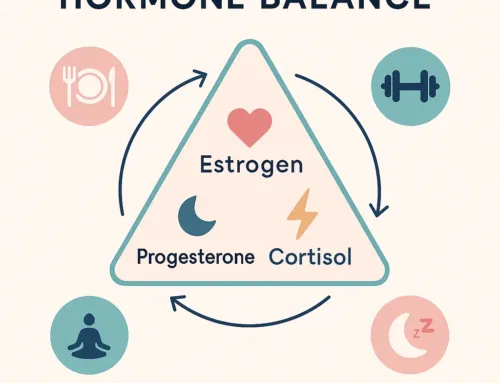
Approx. read time: 6.6 min.
Post: Understanding Body Fat: Types, Roles, and Impact on Daily Life and Longevity
Body fat is a complex, multifunctional component of the human body that goes far beyond simply being a storage depot for excess calories. It plays crucial roles in energy metabolism, hormone regulation, insulation, and protection of internal organs. However, the amount, distribution, and type of fat in the body have profound implications for overall health, quality of life, and longevity. This article explores the different types of body fat, their physiological functions, and their impact on daily life and long-term health outcomes.
Types of Body Fat
Body fat can be classified into several types, each with distinct characteristics, locations, and roles:
- Subcutaneous Fat
Subcutaneous fat lies directly beneath the skin and is the most visible form of fat. It is distributed unevenly across the body, with higher concentrations in areas such as the abdomen, thighs, and hips, depending on genetic predispositions and gender. - Visceral Fat
Visceral fat, also known as abdominal or intra-abdominal fat, surrounds the internal organs within the abdominal cavity. Unlike subcutaneous fat, visceral fat is not visible externally, but it is metabolically active and associated with various health risks. - Brown Fat (Brown Adipose Tissue)
Brown fat is a specialized type of fat tissue primarily involved in thermogenesis—the process of heat production. It is more prevalent in infants but persists in small amounts in adults, typically around the neck and shoulders. - White Fat (White Adipose Tissue)
White fat is the primary type of fat responsible for energy storage and hormone production. It cushions internal organs and serves as an insulating layer under the skin. - Beige Fat
Beige fat is a hybrid type that has characteristics of both white and brown fat. Under certain conditions, such as exposure to cold or specific hormonal signals, beige fat can transform into metabolically active brown fat. - Essential Fat
Essential fat is necessary for survival and is found in small amounts within organs, muscles, and the central nervous system. It plays a critical role in maintaining overall physiological function, including hormone regulation and temperature control.
The Functions of Body Fat
Body fat serves essential functions that contribute to overall well-being. However, the balance and distribution of fat are crucial in determining its impact on health.
1. Energy Storage and Utilization
White fat is a vital energy reservoir. It stores excess calories in the form of triglycerides, which can be broken down into fatty acids and glycerol when energy demands exceed caloric intake. This mechanism ensures that the body has a steady energy supply during periods of fasting or increased physical activity.
2. Thermoregulation
Brown fat plays a significant role in maintaining body temperature, especially in cold environments. By burning calories to produce heat, it helps prevent hypothermia and maintains core temperature.
3. Hormonal Regulation
Adipose tissue is an endocrine organ, secreting hormones such as leptin, adiponectin, and resistin. Leptin helps regulate appetite and energy balance, while adiponectin enhances insulin sensitivity and has anti-inflammatory properties.
4. Organ Protection and Insulation
Both subcutaneous and visceral fat act as cushioning layers to protect internal organs from trauma. Subcutaneous fat provides insulation to minimize heat loss, ensuring that the body maintains an optimal internal temperature.
5. Reproductive Function
Essential fat is critical for hormonal balance, particularly in women. It supports reproductive health by regulating estrogen levels and ensuring a supportive environment for pregnancy.
The Impact of Body Fat on Daily Life
Subcutaneous Fat
Subcutaneous fat contributes to body shape and acts as a buffer against external trauma. While moderate amounts of subcutaneous fat are beneficial, excess levels can impact self-esteem and mobility, particularly when concentrated in specific areas.
On a positive note, subcutaneous fat also acts as an energy reserve and supports skin elasticity and resilience.
Visceral Fat
Excess visceral fat is associated with numerous health risks, including cardiovascular disease, type 2 diabetes, and certain cancers. High visceral fat levels can also contribute to chronic inflammation and insulin resistance, leading to fatigue and reduced daily energy levels.
Because visceral fat is located near vital organs, its influence on metabolism is more pronounced than that of subcutaneous fat, making it a key focus in weight management and health improvement strategies.
Brown Fat
Although its contribution to daily energy expenditure is modest, brown fat plays a role in maintaining body temperature and metabolic health. Some studies suggest that individuals with higher brown fat activity have improved glucose metabolism and a reduced risk of metabolic disorders.
Essential Fat
The loss of essential fat due to extreme dieting or medical conditions can impair daily functioning. Without adequate essential fat, hormonal imbalances, fatigue, and weakened immune responses may occur, significantly affecting quality of life.
The Role of Body Fat in Longevity
Healthy Levels of Body Fat
Maintaining a balanced level of body fat is crucial for longevity. Excessive fat, particularly visceral fat, is associated with a higher risk of chronic diseases, including cardiovascular disease, hypertension, and certain types of cancer. Conversely, insufficient fat levels can lead to hormonal disruptions, weakened immune function, and bone density loss.
The Obesity Paradox
Research has shown that while obesity increases the risk of chronic diseases, some individuals with higher BMI but lower visceral fat levels may have comparable or even better longevity than lean individuals with low subcutaneous fat and high visceral fat. This phenomenon, known as the “obesity paradox,” underscores the importance of fat distribution over sheer quantity.
Caloric Restriction and Fat Metabolism
Studies on caloric restriction, which often leads to reduced fat mass, suggest a link to improved longevity. Lower fat levels, particularly visceral fat, are associated with reduced inflammation and oxidative stress, two key contributors to aging.
Physical Activity and Fat Utilization
Regular physical activity promotes healthy fat distribution, reducing visceral fat and increasing the activity of metabolically beneficial brown and beige fat. Exercise also improves insulin sensitivity and cardiovascular health, contributing to a longer and healthier life.
Strategies to Optimize Body Fat for Health and Longevity
- Adopt a Balanced Diet
A diet rich in whole foods, including fruits, vegetables, lean proteins, and healthy fats, supports healthy fat distribution. Limiting processed foods and refined sugars can help reduce visceral fat accumulation. - Engage in Regular Exercise
Both aerobic and strength-training exercises are effective in reducing visceral fat and improving metabolic health. High-intensity interval training (HIIT) is particularly beneficial for targeting abdominal fat. - Prioritize Sleep and Stress Management
Poor sleep and chronic stress can increase cortisol levels, promoting visceral fat storage. Prioritizing adequate rest and incorporating stress-reduction techniques like meditation can help maintain healthy fat levels. - Monitor Body Fat Levels
Tools such as bioelectrical impedance analysis and DEXA scans provide detailed insights into fat distribution, enabling targeted interventions. - Cold Exposure
Emerging research suggests that exposure to cold temperatures can activate brown fat, enhancing energy expenditure and supporting fat loss.
Conclusion
Understanding the types, functions, and impacts of body fat is essential for making informed decisions about health and wellness. While fat is often vilified, it is a critical component of the body with diverse roles in energy metabolism, hormone production, and protection. The key to a healthy and long life lies in maintaining an optimal balance and distribution of fat through diet, exercise, and lifestyle modifications. By addressing the unique characteristics of subcutaneous, visceral, brown, and essential fat, individuals can improve their quality of life and enhance their longevity.
Body fat is more than just a number on a scale—it is a dynamic, multifaceted tissue that profoundly influences how we live, age, and thrive.
Related Videos:
Related Posts:
Period Hack: The Most Effective Way for Women to Eliminate Belly Fat and Build Muscle
Understanding Fatty Liver Disease and the Role of Gut Health
The Importance of Myokines in Overall Human Health and Longevity
Feeding Your Organs with Whole Foods: A Guide to Supporting and Healing Your Body Naturally









